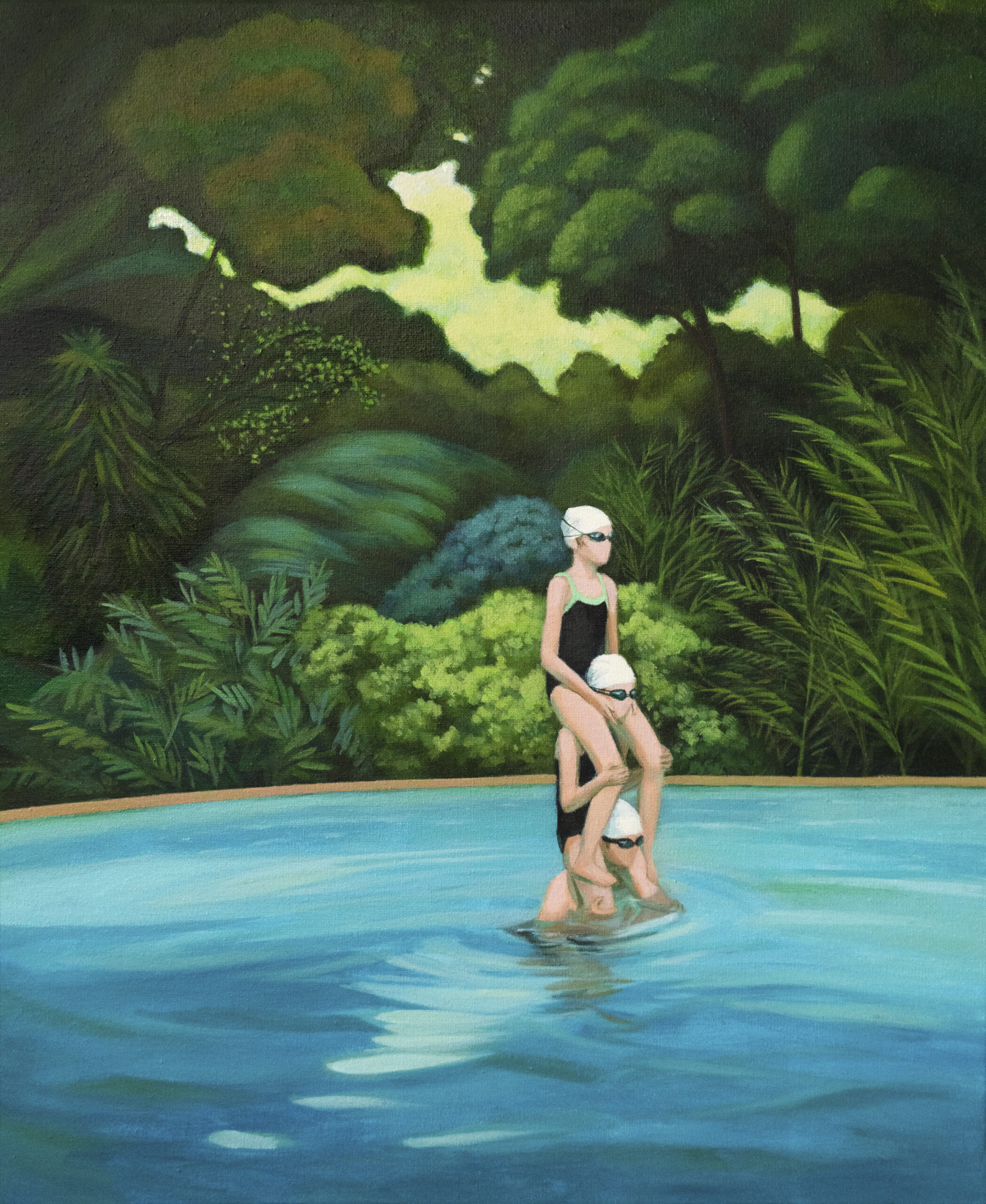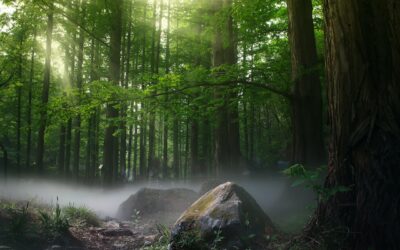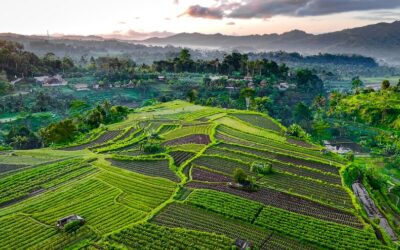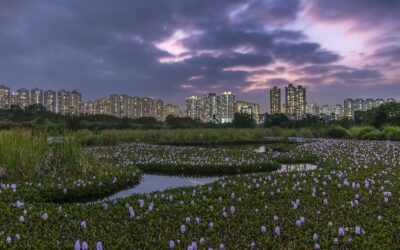This post was originally published on Colossal
“Pool” (2023). All images © Zhongwen Hu, shared with permission
Throughout Zhongwen Hu’s most recent Day Tripper series, two things ceaselessly pervade: nature and contemplation. Abstract reflections ripple on a riverbank, umbrella-like trees provide communal shade, and figures trek across brilliant terrain in the Shanghai-based artist’s musing acrylic paintings.
Akin to a montage of fleeting moments, each work takes the viewer from scene to scene, depicting meaningful narratives that stem from Hu’s experiences. Profoundly observant of nature and sensitive to the wistful allure of mundane life, the artist often takes photos of her surroundings during moments of tenderness to make sketches before painting. This attentive process allows for Hu to seamlessly place an almost tangible tranquility into the viewer’s hands.
Deeply inspired by walking meditation, an introspective practice that originated from Buddhism, Hu cultivates mindfulness within her own work by embracing the beauty of being present. “I’m really interested in the relationship between consciousness and spacetime,” the artist tells Colossal, explaining further:
That is, to discard the distractions of thought, and to embrace the unbridled sensations of objects and our surroundings. At the same time—since time does not, in some ways, exist—the past and future only exist in the mind, and the only moment that can be experienced is the present. Such a fixation on the present can help to extricate thought and judgement, a state of mind that I believe is a gateway to self-healing.
See more work on Hu’s website and Instagram.

“Riverbank” (2023)

“Spring Rain” (2023)

“Playground” (2023)

“Deep Breathing” (2023)

“Willow 2” (2023)

“Yellow” (2023)

“To Somewhere Upward” (2023)

“Sprinkler Guy” (2023)

“Security Guards” (2022)

“Willow 1” (2023)

“Explorers” (2022)
Do stories and artists like this matter to you? Become a Colossal Member today and support independent arts publishing for as little as $5 per month. The article Zhongwen Hu Meditates on Presence and Emotional Sensitivity in Her Abundant Scenes of Nature appeared first on Colossal.





0 Comments